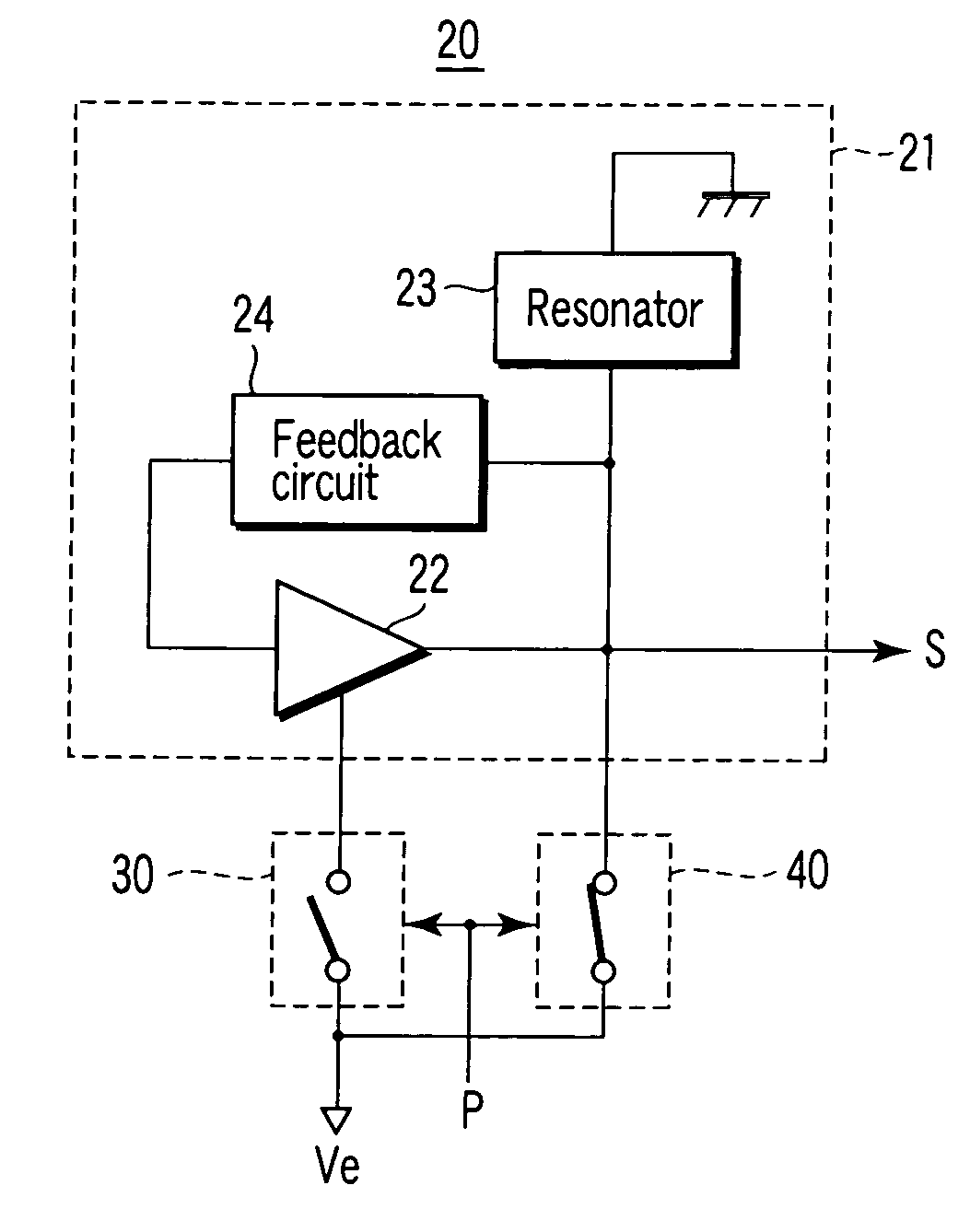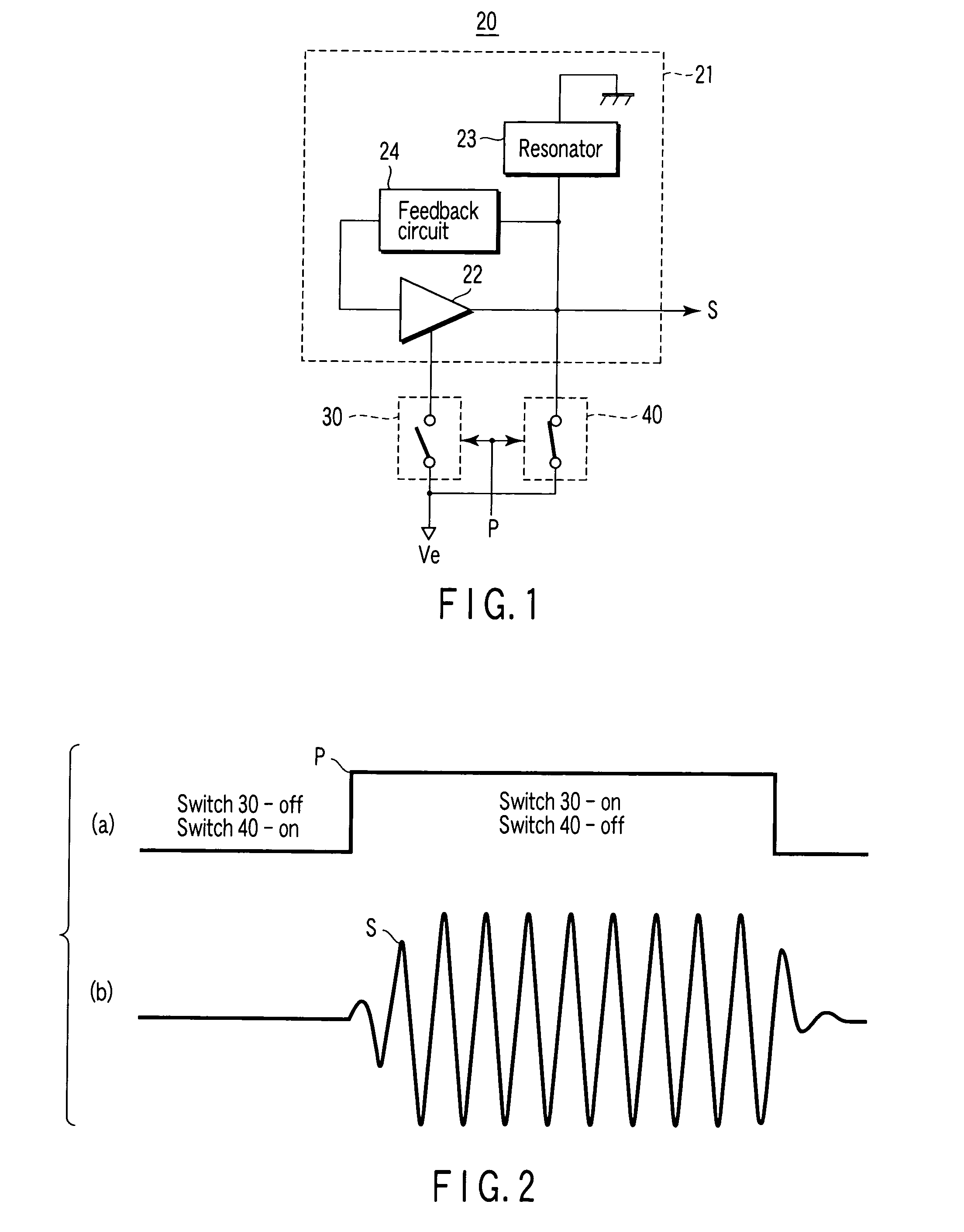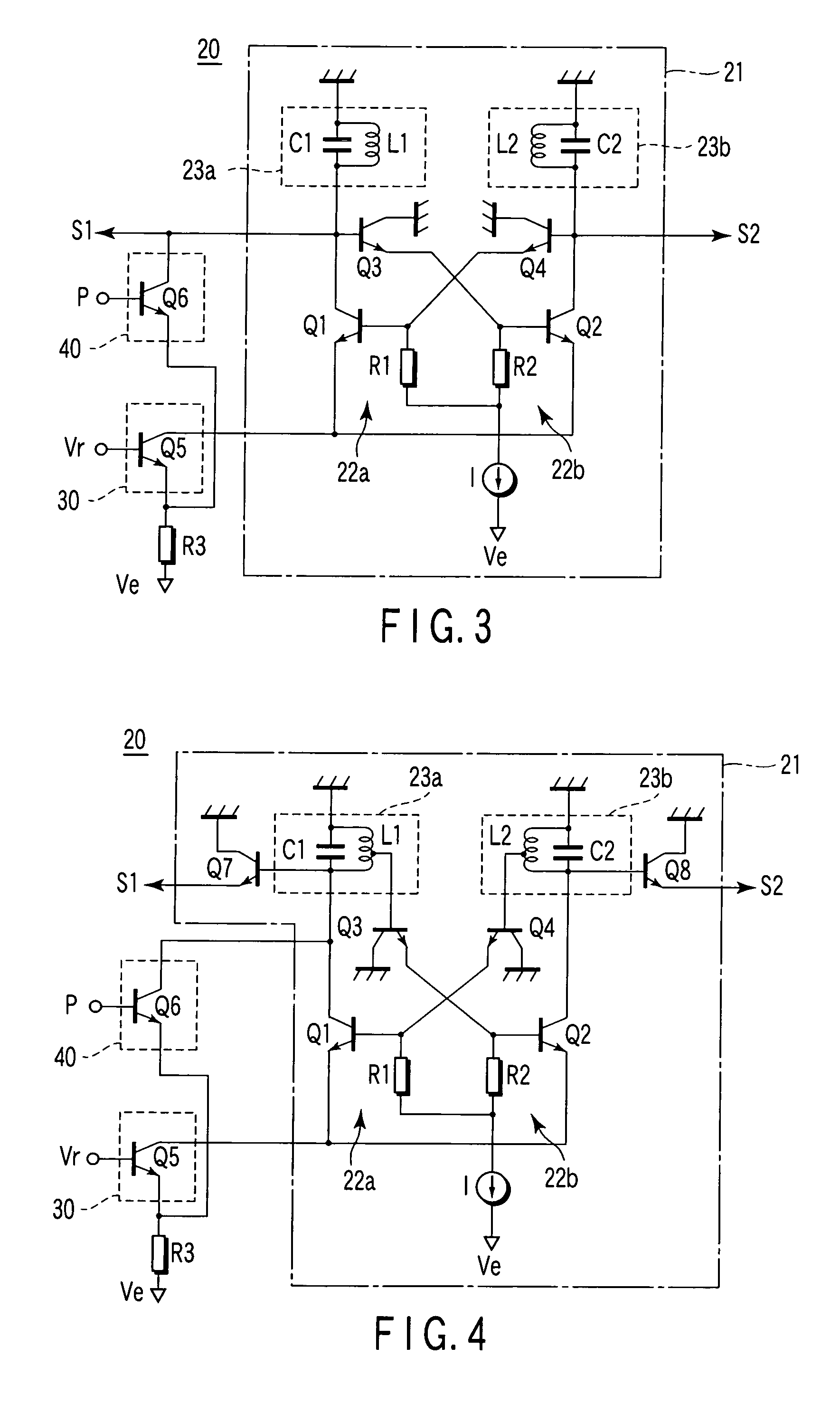Radar oscillator
a technology of radar and oscillator, which is applied in the direction of oscillation generators, instruments, measurement devices, etc., can solve the problems of disadvantageously difficult to prevent leakage at a high frequency band ranging from 22 to 29 ghz
- Summary
- Abstract
- Description
- Claims
- Application Information
AI Technical Summary
Benefits of technology
Problems solved by technology
Method used
Image
Examples
first embodiment
[0049]FIG. 1 is a block diagram shown to explain a configuration of a radar oscillator 20 according to a first embodiment to which the present invention is applied.
[0050] The radar oscillator 20 basically includes: an oscillation unit 21 which has an amplifier 22, an LC resonator 23 which is connected to the amplifier 22, has at least an inductance component and a capacitance component, and resonates at a predetermined resonant frequency, and a feedback circuit 24 which performs positive feedback from an output side of the amplifier 22 to an input side of the amplifier 22, and which outputs an oscillation signal having a frequency determined by the resonant frequency of the LC resonator 23; a first switch circuit 30 which is connected to a power supply unit Ve to the amplifier 22 of the oscillation unit 21, which turns off an electric power supply by the power supply unit Ve to the amplifier 22 in a period in which a pulse signal representing a transmitting period for transmitting ...
second embodiment
[0068]FIG. 3 is a block diagram shown to explain a configuration of a radar oscillator according to a second embodiment to which the present invention is applied.
[0069] The configuration in FIG. 3 to which the second embodiment is applied shows a more concrete circuit example of a radar oscillator 20 which receives a pulse signal P having a negative logic.
[0070] An oscillation unit 21 of the radar oscillator 20 in FIG. 3 includes a first amplifier 22a constituted by a first LC resonator 23a formed by a parallel connection between a coil L1 and a capacitor C1, a first transistor Q1 using the first LC resonator 23a as a load, and a base resistor R1 of the first transistor Q1.
[0071] The oscillation unit 21 of the radar oscillator 20 has a second amplifier 22b constituted by a second LC fresonator 23b formed by a parallel connection between a coil L2 and a capacitor C2, a transistor Q2 using the second LC resonator 23b as a load, and a base resistor R2 of the transistor Q2.
[0072] In...
third embodiment
[0094]FIG. 4 is a block diagram shown to explain a configuration of a radar oscillator according to a third embodiment to which the present invention is applied.
[0095] In FIG. 4, the same reference numerals as in FIG. 3 denote the same parts as in the radar oscillator according to the second embodiment shown in FIG. 3, and a description thereof will be omitted.
[0096]FIG. 4 shows, as a radar oscillator according to the third embodiment to which the present invention is applied, an example in which bases of transistors Q3 and Q4 constituting buffers are connected to intermediate taps of coils L1 and L2 of first and second LC resonators 23a and 23b, respectively, to further increase Q of the first and second LC resonators 23a and 23b, and transistors Q7 and Q8 (a power supply circuit for these transistors is omitted in the drawing) are arranged as output buffers.
[0097]FIG. 5 is a characteristic diagram showing response characteristics (simulation result) of the radar oscillator acco...
PUM
 Login to View More
Login to View More Abstract
Description
Claims
Application Information
 Login to View More
Login to View More - R&D
- Intellectual Property
- Life Sciences
- Materials
- Tech Scout
- Unparalleled Data Quality
- Higher Quality Content
- 60% Fewer Hallucinations
Browse by: Latest US Patents, China's latest patents, Technical Efficacy Thesaurus, Application Domain, Technology Topic, Popular Technical Reports.
© 2025 PatSnap. All rights reserved.Legal|Privacy policy|Modern Slavery Act Transparency Statement|Sitemap|About US| Contact US: help@patsnap.com



